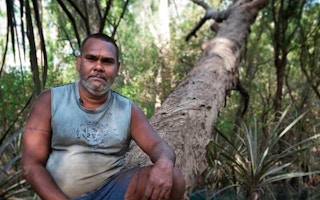Northern Australia has become the latest region to benefit from a growing international movement to put land stewardship back in the hands of indigenous and rural communities.
International NGO The Nature Conservancy (TNC) and its partners have purchased the 450,000 acre Fish River Station, a former cattle ranch on the Daly River, for the purpose of handing back to the original indigenous inhabitants.
In a transition ceremony attended by Australian Minister of Environment Tony Burke late last week, the Indigenous Land Corporation (ILC) took ownership of the AUS$13 million property on behalf of local communities who will eventually manage the land permanently.
ILC is an organisation that helps indigenous Australians acquire and manage land for cultural and economic benefits.
The TNC deal, a partnership with the Australian Government, ILC and the non-profit Pew Environment Group, included land management training for indigenous rangers. The rangers are being hired to undertake conservation measures such as weed eradication, plant and animal surveys, fencing and soil conservation.
“Employing Indigenous Rangers is a critical step to ensure traditional knowledge and the best modern science are combined for lasting results,” TNC’s Australian director, Dr Michael Looker, said in a statement.
He added that the Fish River Station project would create lasting jobs for indigenous Australians, conserve biodiversity and promote additional land conservation projects. “The acquisition is a remarkable step forward for conservation in Australia,” he said.
TNC said the project has spurred interest in creating new conservation areas in the surrounding region, which contains savannah woodlands, rainforest and Daly River flood plains. It may eventually be part of a nearly two million acre network of conservation land and link to a larger government plan, known as the Trans-Australia Eco-Link, to connect more than 2,175 miles of protected areas ranging from South Australia to the Arafura Sea in Australia’s Northern Territory.
Tim Bond, who is a scientist with Australia’s National Reserve System, said in a statement that the Fish River Station land deal represented a big win for nature conservation and a new model for reconnecting indigenous people with their land.
“This is a real first for protected areas in Australia - a great alliance with new thinking about how to build long-term conservation in some of our most remote country,” he added.
The same isolation that renders the Fish River Station region difficult to manage with conventional land management practices is responsible for preserving its ecosystems, according to TNC’s website, which notes that the former owners of the Fish River Station ranch found it too difficult to develop the infrastructure in such a remote location. Much of the original habitat is still intact, and provides homes to up to 600 plant species and at least 19 species of animals such as the northern brown bandicoot, the Gouldian finch and the common wallaroo.
Conventional conservation less effective
Recent studies by the World Bank and the NGO Centre for International Forestry Research have found that conventional conservation projects, which exclude many traditional human activities from protected land, tend to be less effective at stopping land degradation than programmes that support local communities’ responsible use and management of land.
Critics of conventional conservation projects to reduce deforestation have cited the studies in a call for new approaches to forest protection that take into account the well-being of the communities dependent on forests for survival.
In an October report, the United Kingdom-based non-profit Forest Peoples Programme said that the 300 indigenous groups living in the Indonesian provinces of Papua and West Papua were suffering as a result of decades of top-down management of the forests where they lived. The report noted that communities affected by forest conservation schemes were given little information or input into local policies, and had no clear rights to the land and forest resources on which they depended.
A study published earlier this year by Timor-Leste based Trevaylor Consulting found that engaging local communities in Indonesia was essential to stopping deforestation, noting: “Until (the land tenure rights of local communities are) addressed, it will be hard to make more than token progress on the pressing issues facing the land use sector, such as deforestation, conflict and misguided investments that undermine development.”
Movements to combine the issues of land rights for indigenous communities and environmental conservation are underway across the globe, including in Africa’s Congo basin and in South America’s Amazon region.










